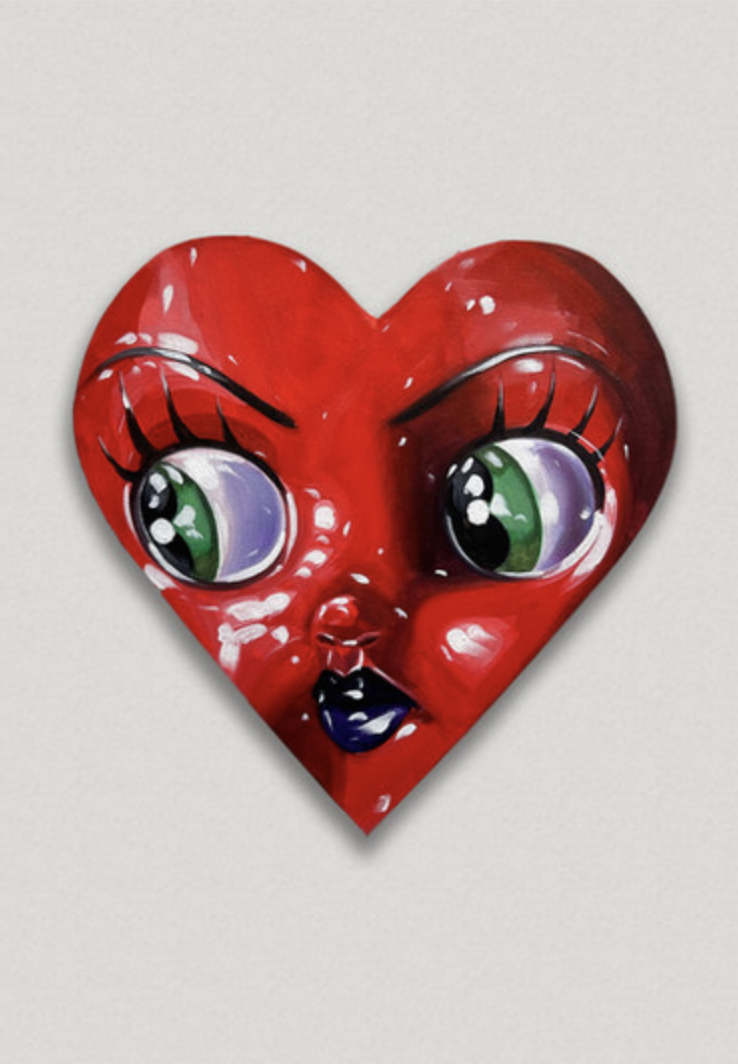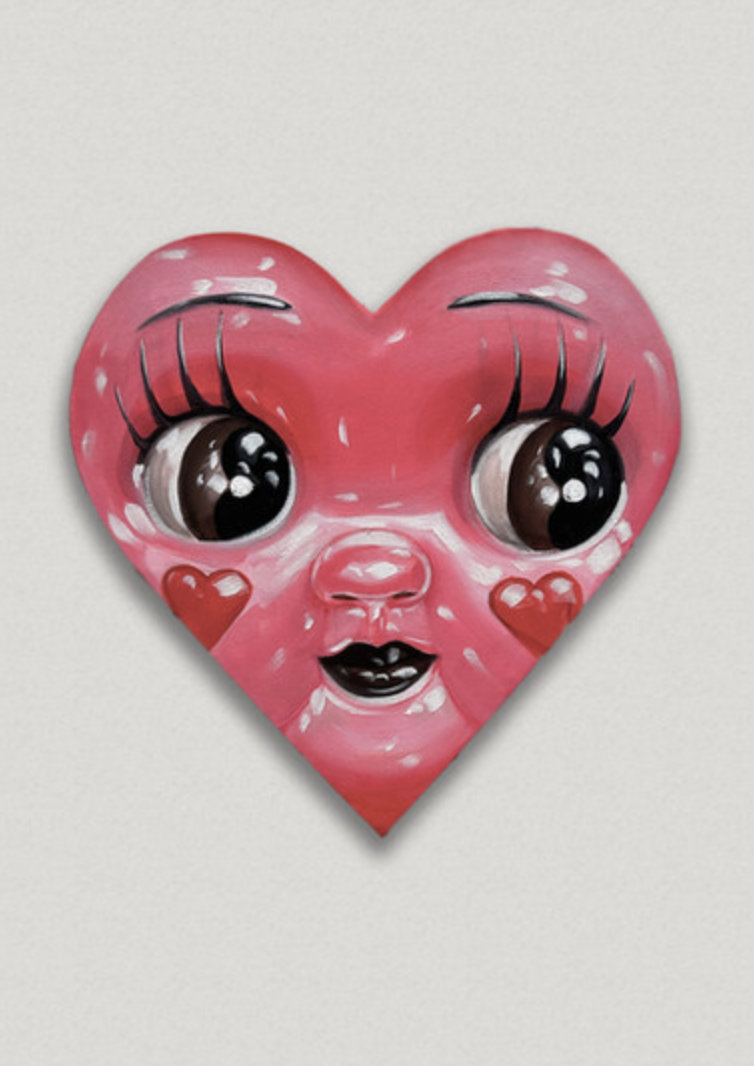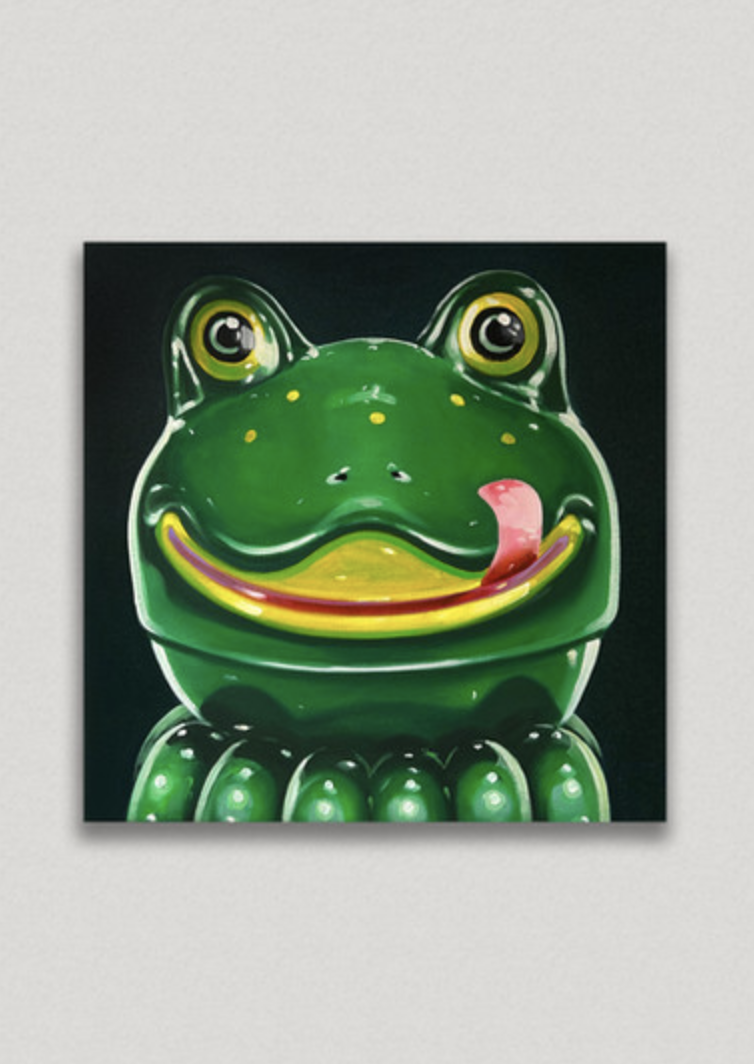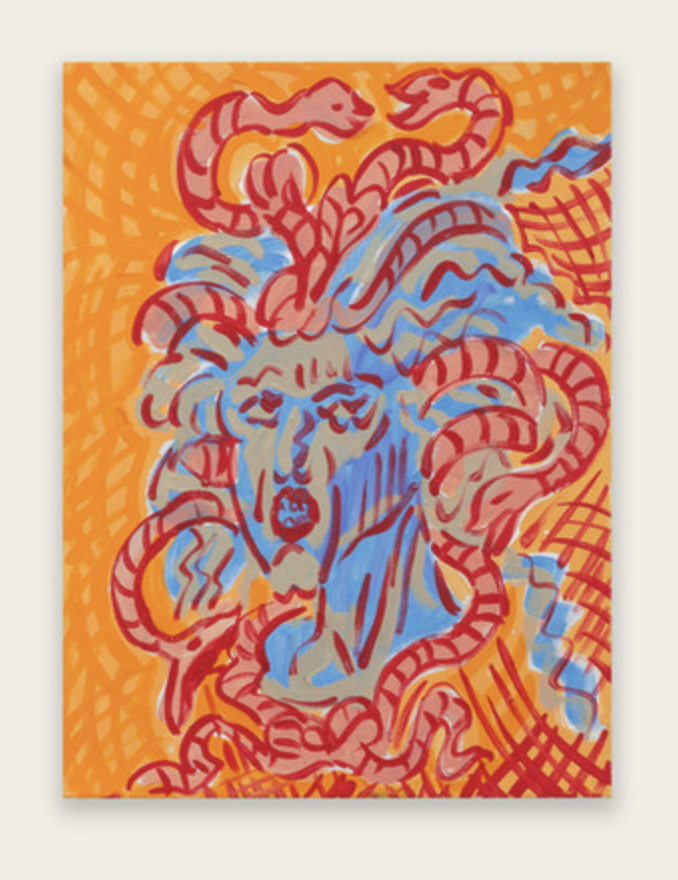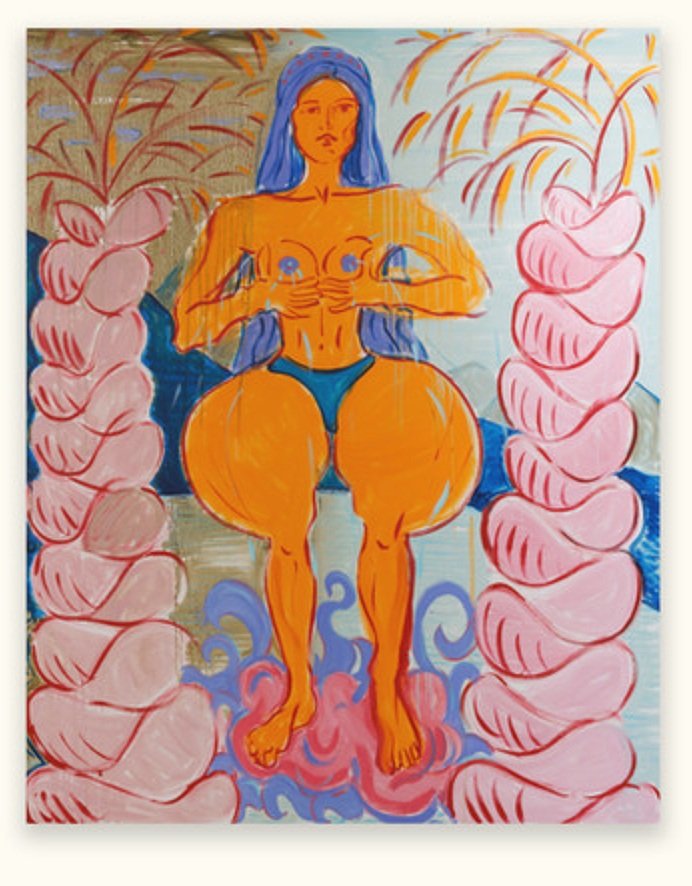A Dream Within A Dream @ Haricot Gallery
On a quiet corner of a cobbled street, away from the typical busy bustle of Shoreditch, the verdant green doors of Haricot Gallery invite visitors inside. Stepping onto the meticulously hand-painted red and white chessboard floors, the space resembles something straight out of Alice in Wonderland (of the Tim Burton variety, of course). And walking into the gallery is certainly an experience akin to falling down the rabbit hole. Evocative colours, mystical figures, and alien sculptures greet you at the door...
Hosting their newest exhibition, ‘A Dream Within A Dream’, Haricot Gallery’s group show sits at the crossroads between reality and fantasy. Weaving together a body of work that tethers on the edge of the tangible and the ephemeral, five London-based artists invite viewers to explore this realm. Alya Hatta, Candice Dehnavi, Aysha Nagieva, Sophie Vallance Cantor, and Rafaela de Ascanio, present artworks built on personal memories and otherworldly mythologies simultaneously. An interplay between imagination and reality, nuances of this exploration is evident throughout the exhibition. As the chessboard implies, viewers are encouraged to navigate this dreamscape mindfully, taking time to consider and unravel the layers of meaning and narratives unfolding across the works.
Rafaela De Ascanio, Santanico Pandemonium, 2023. Installation View, 2024. Photo Courtesy: Haricot Gallery.
Each artist offers an intriguing narrative within this dreamscape.
Drawing from her personal memories and experiences, Alya Hatta is influenced by her communities of both South London and Kuala Lumpur. Community and ecology feature as key themes across her works. Untamed wilderness is depicted in tandem to tender flowers, as a means of creating alternate realities whilst rooting herself in her communities. Also grounded in the rich tapestry of Southeast Asian mythology, Hatta's artworks are imbued with a sense of cultural hybridity, stitching together threads of personal memory and collective folklore to depict imaginative landscapes.
Colourful and gestural, her painting Lake Gardens depicts otherworldly figures amid wild brushstrokes; fierce and torn in two directions. Created following a painful heartbreak, evidenced by the angry yet nonetheless cathartic brushstrokes. The work is also heavily textural, with scraps of fabric and lace embellishing the canvas, perhaps mirroring the act of stitching yourself back together. The fabric materials used in the work are sourced from a shop on East Street Market, where Hatta is a local. Thus, embodying her personal relationships, the gestural brushstrokes and collage of fabrics onto her canvases weave together stories of the tangible and the ephemeral influences of her work.
Alya Hatta, Lake Gardens, 2024. Photo Courtesy: Haricot Gallery.
Absurd and otherworldly, Candice Dehnavi’s sculpture Grand Self-Mythologies translates the dreamlike nature of hazy recollections into a physical form of representation. Seemingly emerging out of the ground of the gallery, the sculpture appears monstrous or alien. Through this exaggerated lens of absurdity, Dehnavi recreates extensions of the physical body. Reflecting on the sculpture, Dehnavi explains that this alien appendage has been transported from its homeland into our world and is being forced to adapt. Created to celebrate and reclaim a turbulent life of queerness and love, Dehnavi “transcribes the haunting of [their] past and future into silicone clad relics of love, desire, and miscommunication, amplifying the mythical worlds in which each of us hides.”
‘A Dream Within A Dream,’ Installation View, 2024. Photo Courtesy: Haricot Gallery.
Like Hatta and Dehnavi, Aysha Nagieva similarly pulls influences from reality and lived experiences, transforming them on the canvas to something fantastical. Utilising Nevalyashka dolls as surrogates for self-portraits, Nagieva’s duo of oil paintings Angry Doesn’t Even Come Close, and I Don't Like Surprises, are bold, capturing the recollections of her past self and emotions. Playful and whimsical, the dolls act as time capsules, holding her own expressions from specific moments whilst also offering the viewers the opportunity to reflect on their own familiarity with such emotions. Beneath the plastic facades of the dolls lies an openness and vulnerability of self-expression.
Similar to the way in which the dolls serve as a stand-in for Nagieva, she also paints important figures in her life discreetly, disguising them as dolls or transforming them into other forms, whilst retaining their likeness through distinct details. This is true for I Swallowed It Already. The neon green frog is based on Nagieva’s pug, Taurus. Through this metamorphosis, the painting still retains all the familiar attributes of a pug, from their rounded eyes and mischievous smile. The tender affection for her pet is evident despite the transformation. (And the title is a sentiment that pet parents will know all too well!) Transmuting memories and sentiments into childlike, playful figures, Aysha Nagieva builds memory beings which hold her recollections whilst joyfully inviting viewers to enjoy their own moments of recognition.
Blurring the line between reality and imagination, Sophie Vallance Cantor depicts portraits representing herself and her partner with a rich and cinematic stillness. The figures stare off into the distance with a sense of cool nonchalance. One can almost imagine the scene unfolding off the canvas: a dim bar lit with a neon sign, the smoke of a cigarette rising into the air, the background hum of motorcycles blurring past...The rich and luscious colours of oil paint immortalise these moments of tenderness with vividness and invites the viewer into Cantor’s inner world whilst keeping them just at arm's length.
All the while, the portraits are exaggerated and dreamlike, the devil horns reflecting an otherworldly quality too. Of the of the devil horns, Cantor expresses them as a commentary on the British public's perception of immigration: “Something that always amuses me is people noticing the devil horns in the works, and assuming what they must mean or be a symbol of, but if they looked closer ‘El Diablo’ isn’t ever causing trouble in the paintings, he’s usually got an air of calm stoicism about him.” Subverting symbolism, Cantor utilises the fantastical and monstrous to comment on the reality of otherness.
Sophie Vallance Cantor, All I Can Say Is, I Know Where I Belong (With You), & Sympathy For The Devil, 2024. Installation View. Photo Courtesy: Haricot Gallery.
Defiant and empowered, Rafaela De Ascanio’s protagonists stare directly at their viewers, unashamed. Exploring the female experience, De Ascanio draws inspiration from an abundance of sources, ranging from autobiographical events, ancient mythologies, cult films, sci-fi, literature, and pagan practices. Depriving the male gaze, De Ascanio reimagines the female; as goddess, mother, leader, with power and sexual ownership reclaimed.
On the first floor of the gallery, De Ascanio’s tapestry Santanico Pandemonium, hangs on the wall. Eponymous to a character from the cult film ‘From Dusk till Dawn’, Santanico, portrayed by Salma Hayek, is a serpent queen of a seedy roadside strip joint. The character also references a snake goddess from ancient monotheistic culture. She proves to be an ideal source of inspiration for De Ascanio, “bridging the space between pre-Christian matriarchal religions and female icons in contemporary culture.” The material of the work is also noteworthy. Tapestry, as a form of textile art has historically been marginalised as a woman's craft, and in using this form to depict a femme fatale with sexual agency, De Ascanio disrupts patriarchal assumptions.
Akin to Cantor, De Ascanio’s painting Revenge Coiffure explores the perception of monstrosity. Arguably one of the most notorious monsters of ancient myth, Medusa’s story is also one of the most tragic. Cursed and transformed into a monstrous form for the crimes of Poseidon. Referring to the ‘Feminine Power’ exhibition by the British Museum as an influence for the work, De Ascanio states, “there was a lot in the exhibition about wrath, revenge, rage, and I liked this aspect of the ancient divine female, worshipped for fearsome states rather than the usual nurturing mother Mary.” Next to Revenge Coiffure, Inanna stands proud. An ancient Sumerian goddess of love, sensuality, and fertility but also of war, the female figure is the culmination of De Ascanio’s influences. Her art utilises ancient and fantastical iconography to depict powerful embodiments of feminine strength and resilience.
Rafaela De Ascanio, Revenge Coiffure & Inanna, 2022. Installation View, 2024. Photo Courtesy: Haricot Gallery.
Fun and bold, ‘A Dream Within A Dream’ is fundamentally an explorative exhibition. Each of the five artists creates from a place from dreamlike imagination, blending real life experiences into enigmatic stories. Treading through this space where the landscapes of imagination collides with the solid ground of existence, the show offers viewers a journey through personal narratives, mystical figures and fantastical forms.
‘A Dream Within a Dream’ is on view at Haricot Gallery until 2nd March 2024.
Many thanks to Haricot Gallery for allowing MADE IN BED exclusive pre-opening access to the exhibition and to Harry Raikes for all his contributions to the article.
Nabila Bulbul
Editor in Chief, MADE IN BED





